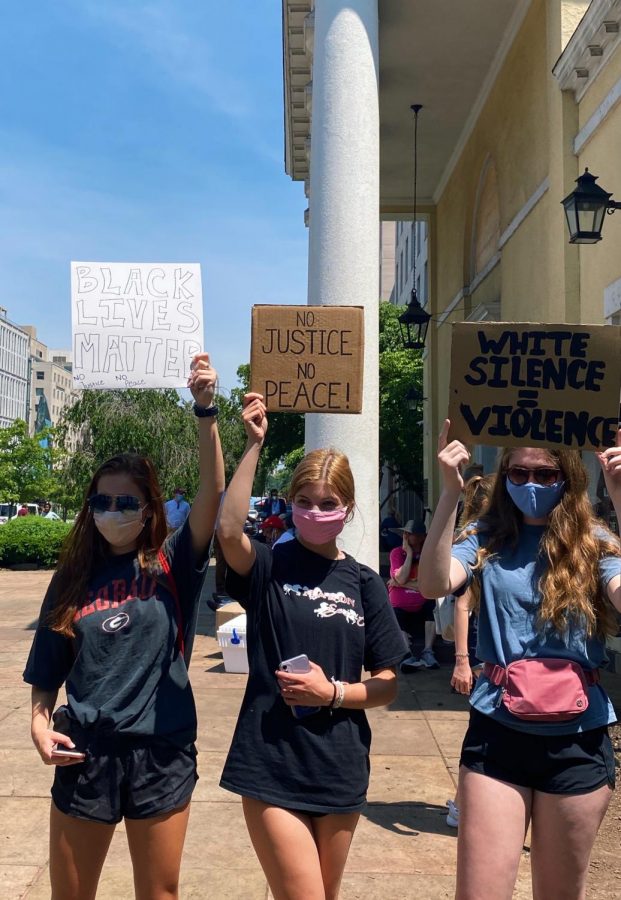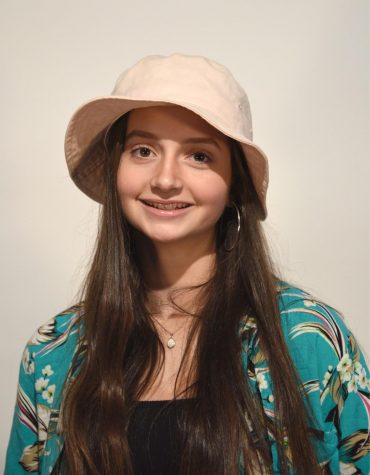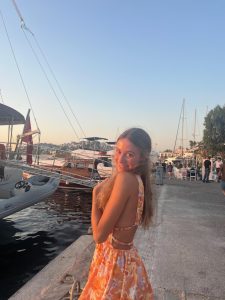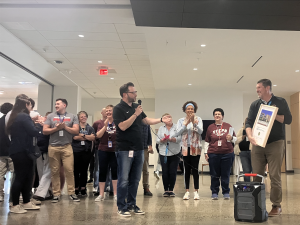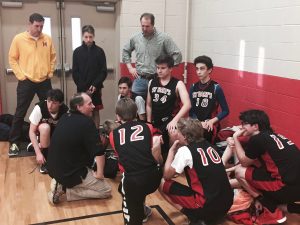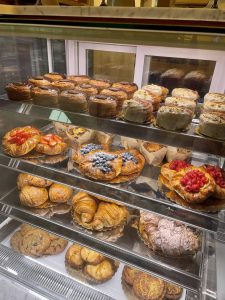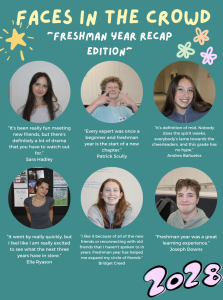Dear Falls Church parents: Let your kids march
Lasso editor Sarah Lambert reflects on her experiences protesting against police brutality in DC in a letter to Falls Church parents.
Juniors Jillian Kendrick, Emilia Cipriano, and Grace Renner held signs condemning police brutality outside of St. John’s Episcopal Church in DC. (Photo by Sarah Lambert)
June 12, 2020
After watching the anger that has erupted across our country in response to cases of police brutality, Mason students have been asking themselves “What can I do to help?”. Most of us are white, so fighting this kind of racial bias is a choice, a battle we can pick up and put down. We don’t need to worry about our race affecting our job applications. We don’t need to worry about our clothes making us look threatening. We don’t need to worry about being murdered by the people supposed to protect us.
Many have posted a black square on Instagram, walked in the Falls Church City Unity March, or donated to the cause. For some, this is enough, and that’s ok. But what do you do if this is a battle you want to keep fighting? What do you do if Instagram posts and donations don’t feel like enough? How can we make an impact that reaches more than the handful of peers that watch our Instagram story? One option is joining the peaceful protests in DC.
Protests enable individuals and groups to publicly demand that the authorities and other powerful entities rectify problems and are accountable for their actions. Protesting 15-minutes away in a place like DC reaches arguably the most important audience in the world: the U.S. government. With enough participants, it has the ability to provoke real, tangible, and national change.
But most Mason students can’t. Their parents won’t let them. Citing COVID and safety concerns, they say it’s not worth the risk.
COVID is a valid concern. If you are not letting your teenager see friends or go to the Falls Church March due to proximity to a vulnerable household member, going to DC should definitely be out of the question. But if you are letting your child do these things, please be informed about the protests in DC. On days I went, I didn’t see a single person not wearing a mask. On Saturday’s large march, social distancing was definitely hard, but people kept their distance as much as they did during the Falls Church City march. On less crowded days, there was far more than six feet between protesters.
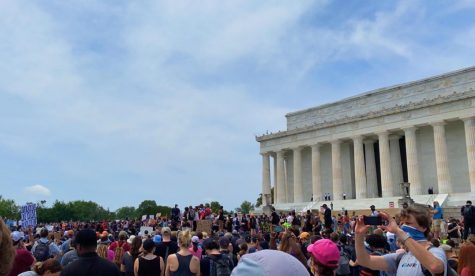
Violence is another concern. DC was the site of a gas attack against protestors last week, and parents have every right to be worried. The initial reaction to George Floyd’s murder fed into a perfect storm. People were infuriated by the poor response from our national leaders to COVID, were horrified by the racial disparities in deaths, had been in isolation for months, were shocked by viral videos of black men and women murdered by police, faced personal economic catastrophe, and had time to follow all of it on their phones. Americans were sick, tired, and pissed off, and a few rioted and looted. Authorities fired back, even at peaceful demonstrators, with rubber bullets and tear gas. But after that initial turmoil, peace has been relatively restored. Protesters and the authorities in DC have calmed down. Protesters are still angered by injustices, but people are no longer showing an untamed visceral reaction. The more aggressive troops have left DC. The gatherings on Saturday were nothing but peaceful. Law enforcement didn’t intrude on demonstrators and instead stood calmly on street corners offering marchers water and wishing them a good day.
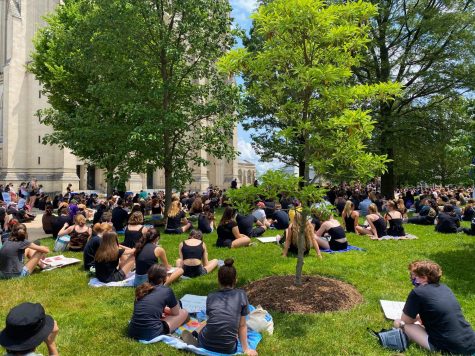
If parents still aren’t convinced by the evidence of peace and stability, please discuss measures to ensure teens’ safety. Explain what to do when confronted with a hostile crowd or violent authorities. Drop off and pick up kids from the protests to guarantee they are not walking into a dangerous situation. Protests that turn violent only seem to do so later in the day, so allow participation in morning and midday protests. Even consider marching with the kids, setting an example of how an engaged and informed citizen should behave, while protecting them from potential threats.
Also, consider your own biases. The women’s rights and gun control marches were mostly white. But the Black Lives Matter protests are multiracial. Are you teaching your children a narrative that protests made up of angry black people are inherently violent? When you label a protest a “riot,” you are characterizing the protesters as the problem, making them the people we need to be protected from, justifying police violence against those protestors. We should reflect on the fact that the label “riot” is disproportionately applied to protests where the crowd largely includes the disenfranchised. Think about whether you are labeling groups of people of color as inherently violent.
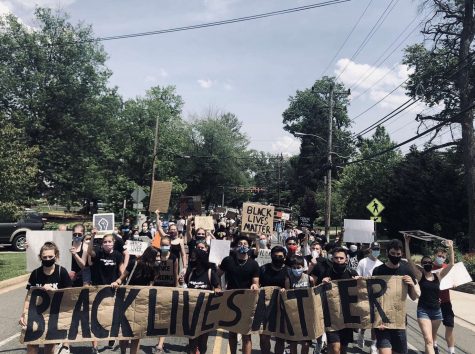
Parents may still ask why protesting in DC is so important. Why not just protest here in Falls Church? Well, there was a march in Falls Church City, and it was important. It was a public statement declaring that we, as a community, object to police brutality. It pressured our neighbors to take action. But for the most part, the protest was largely “performative” – some people wanted to feel like they did something to help. High schoolers at the front of the march chanted for justice, but adults in the back reportedly chatted about how they haven’t seen each other since lockdown. The protest got everyone engaged, but what change was enacted, and whose opinion was changed? Going to DC exposes us to a global audience and a multiracial experience. When we march in DC, the entire world is watching.
Every generation has a moment, an opportunity to inspire social change and to advance human rights. This is our generation’s. This is our opportunity to use our voices to shout down injustice, whether through a megaphone or an Instagram post. What we do will go down in history and have a lasting effect on our lives. In twenty years, our children will ask us what we were doing while millions marched. Ultimately, it should be up to us to determine how we are going to answer that question, not our parents.



